Table of contents
Whole grain corn flour is a fine mill product that is produced by grinding dried corn ( Zea mays L., raw?). Since corn flour is gluten-free, it is a good alternative to flours that contain gluten. Organic quality is common.
Using wholemeal corn flour in the kitchen:
What is corn flour? Wholemeal corn flour is traditionally ground from intact corn kernels. 14 Is corn flour corn semolina? Strictly speaking, corn flour is finer than corn semolina. In trade or in everyday life, however, the two terms are not always clearly distinguished.
Wholemeal corn flour has a sweet taste and can be used in cooking and baking, e.g. to thicken vegan soups and sauces. The fine flour can also be used to make gluten-free pasta dough. Wholemeal corn flour is also used as a breading or in dumplings.
In some South American and African countries, corn is still considered a staple food. In South America, meals are served with "arepas", flatbreads made from corn flour. Tortillas made from corn flour are also well-known (eg corn tortilla gluten-free, without added salt).
Can you bake with corn flour? Baking with wholemeal corn flour is possible, but the finished baked goods are a bit firmer due to the lack of gluten. Pure corn flour can be used to make delicious waffles, pancakes and muffins, among other things. The flour is also used in casseroles (eg in the vegan Cajun cornbread casserole with kidney beans).
Wholemeal corn flour is only suitable to a limited extent for making bread, as it is not a 100% alternative to wheat flour when baking. The amount of gluten in the dough is crucial for the baking ability ("gas retention ability") of the bread. To make bread with corn flour, you should mix the flour with other types of flour. In Mexico and the USA, corn flour is often enriched with protein to improve the baking properties; this means that a corn flour bread can remain gluten-free.
Depending on the type of corn used, a distinction is made between blue, yellow and white whole grain corn flour:
- Blue corn flour, whole grain, is light blue to violet and has a sweet, nutty taste. Blue corn is used for its production.
- Yellow whole grain corn flour, which is most commonly used in Europe, has a strong yellow color.
- White whole grain corn flour is most commonly used in Africa and the USA (for baking bread). It has a milder taste than yellow corn flour. The base is white corn.
Corn semolina instead of corn flour / polenta instead of corn flour: Many recipes with wholemeal corn flour also work with corn semolina or polenta if you don't have any flour on hand. The corn porridge known as polenta is not made from corn flour, but from corn semolina (see below under General Information).
Vegan recipe for corn flour smoked tofu muffins (whole grain):
Ingredients (for 4 people): 150 ml oat milk, 100 g corn flour (wholemeal, organic), 80 g wheat flour (wholemeal), 50 g vegan margarine, 2 tomatoes, ½ block of tofu (smoked), ½ tbsp baking powder, 1 tbsp egg substitute (chickpea flour mixed with 2 tbsp water), ½-1 tsp salt, ½ tsp mustard powder,pepper.
Preparation: First, preheat the oven to 200 °C top and bottom heat. Put organic wholegrain corn flour, wheat flour, baking powder, oat milk, salt, pepper, mustard powder, egg substitute and margarine in a bowl and mix everything together with a mixer. Chop the tomatoes and smoked tofu and fold into the dough. Put the dough in a greased muffin tin and bake the muffins in the oven for about 20 minutes. The hearty, vegan muffins taste great served hot or cold.
Vegan whole grain corn flour recipes can be found under the note: " Recipes that have the most of this ingredient ".
| Not only vegans or vegetarians should read this: Vegans often eat unhealthily. Avoidable nutritional errors. |
Shopping - where to buy corn flour (whole grain)?
Where can you get corn flour? Whole grain flour made from corn is not as easy to find in shops as corn semolina or conventional corn flour. You cannot currently buy whole grain corn flour in supermarkets and at major retailers such as Coop, Migros, Denner, Volg, Spar, Aldi, Lidl, Rewe, Edeka, Hofer etc.
Try organic shops, organic supermarkets ( Denn's Biomarkt, Alnatura) or specialty stores. Many online stores also offer raw wholemeal flour made from corn. If possible, choose organic products. A distinction is made between fine, medium (medium-fine) and coarse corn flour, although even the fine flour is not as fine-grained as wheat flour, for example. 17,18
Whether flour from a stone mill or a roller mill can still be considered raw (raw food) remains a much-discussed research question and depends heavily on the trustworthiness of the grain mill. 14 Nixtamalized corn flour is no longer raw - and no longer whole grain either. This is a pre-treatment in which the corn kernels are soaked in water and wood ash or slaked lime and then cooked. This increases the availability of nutrients (especially vitamin B3), makes it easier to peel the kernels mechanically and changes the adhesive properties of the corn flour. Although the shell does not remain intact during nixtamalization, 18 the grain treated in this way is sometimes considered (especially in the USA) to be comparable to whole grain (due to the better bioavailability of certain nutrients 14).
Making your own corn flour (whole grain):
Make your own corn flour: Since you have to dry freshly bought corn beforehand, this method of production involves a lot of effort. If you still want to try it, you should choose whole corn cobs (raw), cut the kernels off the stalk and then dry them. Popcorn corn is another type of corn that is better not to use: it can clog up the grain mill. 3 Alternatively, you can buy dried corn kernels from grain corn and grind them finely yourself or make the corn flour from corn semolina.
Storage:
To avoid the formation of mold and pest infestation, wholegrain corn flour should always be stored in a dry, cool and dark place. Temperatures between 16 °C and 20 °C are ideal. The flour will last for a maximum of 6(-8) weeks, as it contains the germ 11, which promotes rancidity. It is best to only buy as much wholegrain flour as you can use in the foreseeable future. 1 Do not store corn flour next to foods with strong odors such as tea, coffee or spices, as it can otherwise take on foreign odors.
Corn flour ingredients - nutritional values - calories:
100 g of fine, yellow wholegrain corn flour consists of approx. 77 g of carbohydrates and has an energy content of 361 kcal. The corn flour fiber is filling at 7.3 g/100g. The flour has a fat content of 3.9 g/100g. The 6.9 g of protein contained in wholegrain corn flour can be compared to the content of raw rye grains (raw food). Spelt is slightly richer in protein (15 g). 2
Leucine is contained in wholemeal corn flour at 0.85 g/100g, which makes up 35% of the daily requirement. Oat flakes (raw) contain a similar amount. Ripe soybeans (raw) contain significantly more leucine at 3.3 g/100g and unpeeled hemp seeds at 2.2 g/100g. 2
The thiamine content accounts for around 22% of the daily requirement when consuming 100 g of wholemeal corn flour (and a daily requirement of around 2000 kcal). The content of 0.25 mg/100g is slightly lower than in wheat grains (organic) and teff (dwarf millet). Linseed has a high thiamine content (1.6 mg/100g). 2
The amount of phosphorus (272 mg) in 100 g of wholemeal corn flour is about 39% of the daily requirement. Malt syrup (236 mg/100g) and barley groats (221 mg/100g) have slightly lower values. Significantly more phosphorus can be found in raw chia seeds (860 mg/100g) and wheat bran (1,013 mg/100g). 2
The complete ingredients of whole grain corn flour, the coverage of the daily requirement and comparison values with other ingredients can be found in our nutrient tables. In the article Nutrients explained you will get a detailed insight into the topic.
Health aspects - effects:
Is corn flour healthy? The fine corn flour is very easy to digest and therefore also suitable for people with irritable stomachs. The fiber contained in wholegrain corn flour has a satiating and digestion-stimulating effect. Corn flour also contains species- and variety-specific antioxidants that protect the body from free radicals and reduce oxidative stress. 20
Germinated corn flour (flour made from germinated corn) or fermented corn flour is healthier than conventional corn flour because the phytic acid content in the corn is reduced during germination. 3 Phytic acid is a secondary plant substance and is found primarily in the outer layers of whole grains, nuts and seeds, as well as in pulses. Phytic acid binds minerals and trace elements. These complexes are then not available to the body or are less available. 4 However, phytic acid also has positive properties and acts as an antioxidant in the human body, among other things. You can find out more about phytic acid in the article Phytic acid or phytate and soaking or germination.
Is corn flour gluten-free? Since corn does not contain gluten, corn flour is also gluten-free. People with celiac disease or gluten sensitivity can therefore use corn products as an alternative to gluten-containing grains in the kitchen. 5
Dangers - intolerances - side effects:
Is corn flour unhealthy? Whole grain corn flour contains valuable nutrients and fiber. However, for some people who suffer from the rare corn allergy, eating corn can cause symptoms such as headaches, nausea, diarrhea, reddening of the skin, swelling of the mucous membranes, breathing difficulties or an allergic shock. Those affected should therefore avoid eating products containing corn. 6 Cross allergies to grasses such as wheat, rye, ryegrass or oats are also possible. 6
Folk medicine - natural medicine:
The fine whole grain corn flour is very easily digestible due to its small grains and can be used as a light diet for gastrointestinal diseases. Eating corn flour is also recommended for hyperthyroidism, as the grains slightly inhibit the thyroid and metabolism. It can also be used to gain weight if you are underweight. 7
Occurrence - origin - ecology:
Grain corn ( Zea mays L.) originally comes from Central America, probably Mexico, and belongs to the grass family (Poaceae). Columbus brought corn to Spain in the 16th century, from where it spread throughout Europe. Today it is grown in many temperate and hot regions of the world. Corn has the highest yield potential of cereal plants and is one of the most important types of grain in the world. 8
Is corn a hulled grain? The statement that corn kernels are covered by husks only applies to the variety of pod corn. This is a mutation, but not the original form of corn, as originally thought. 21
Ecological aspects:
The demand for corn is very high because it is used not only as food, but also as a feed and energy crop (bioethanol, biogas). The result is extreme monocultures that damage both the environment and the plants themselves, a heavy use of pesticides and the cultivation of highly controversial genetically modified corn. 9
We recommend using organic corn and organic corn products because the corn is grown without the use of chemical pesticides and herbicides 8 and the use of genetically modified corn varieties is prohibited.
Industrial corn flour production:
To produce corn flour (whole grain), corn is used, not sweet corn. At the beginning of corn processing, the whole grain corn must first be freed of impurities. The corn is then allowed to dry before rollers process the kernels into a fine flour. In the so-called dry milling of whole grain flour, the entire, cleaned corn kernel is used. A characteristic of this process is that the husks and germ are not separated from the rest of the flour. The whole grain corn can also be germinated, fermented and roasted before milling, instead of drying it straight away and processing it into flour. The milling process takes place in several passes. The whole grain corn flour has a fuller flavor, but a significantly shorter shelf life than normal corn flour. 10,11
"Masa Harina" or nixtamalized corn flour: Before drying and grinding the corn kernels, it is possible to treat them in a special way to improve baking properties and to make the proteins contained in the corn more usable for humans. In addition, the so-called nixtamalization process can convert the niacytin ( niacin bound by phytic acid and therefore not usable by the human body) contained in the corn flour into nicotinic acid (vitamin B3). Nicotinic acid acts as a coenzyme for various dehydrogenases (enzymes that split hydrogen), has an antioxidant effect, 12 is involved in many enzymatic processes in protein, fat and carbohydrate metabolism and is important for the regeneration of skin, muscles, nerves and DNA.
Nixtamalization involves soaking the unground corn kernels in water and slaked lime and then cooking them. The treatment makes it easier to separate the outer layers from the corn and machines can peel the kernels. The treated corn kernels can either be ground wet and made into dough directly or dried and processed into "Masa Harina" flour. 13
General information:
There is often confusion between the terms corn flour, corn semolina and corn starch. The following section briefly explains the three products:
- Corn flour: This is finely ground, dried corn kernels (corn). It is available not only in different colors (blue, white, yellow), but also as sprouted, roasted, fermented, enriched corn flour or as "masa harina", a type of flour used to make tortillas.
- Corn semolina (also called coarse corn flour): Corn semolina also consists of dried, ground corn grains, but the semolina is noticeably coarser and the individual particles are larger than in corn flour. Corn semolina is often referred to as polenta.
- Polenta: Is polenta corn flour or corn semolina? Originally, the term polenta did not refer to corn semolina per se, but rather to a porridge that could consist of grains such as wheat, buckwheat, barley, spelt or corn. 15 Today, the terms corn semolina and polenta are interchangeable in many places, even if they are usually not made from the same type of corn. 19
- Corn starch: Is corn flour corn starch? or Is corn starch corn semolina? Corn starch is a fine powder that is obtained from the starchy part of the corn kernel. During production, the starch is washed out of the degerminated and previously swollen corn kernel using a saline solution. 16
For further details on corn grains, see the ingredient corn semolina, whole grain.
Alternative names:
Whole grain corn flour is known in English as whole grain corn flour (corn meal flour). Be careful: In Great Britain, cornstarch is known as cornflour (American: cornstarch or corn starch). This can quickly lead to confusion. In British English, corn flour is usually written in two words (corn flour), and corn starch in one (cornflour). In Spanish, whole grain corn flour is known as harina de maíz integral.
Incorrect spellings such as corn flour, meis flour, maismeh or mouse flour can sometimes be found on the Internet.
For the coarser corn semolina, the following spelling is common in German-speaking countries outside Switzerland: Maisgrieß (e.g. Polenta grits, Maisgrieß recipe, Maisgrieß corn flour difference).
Literature - Sources:
Bibliography - 21 Sources
| 1. | Mindesthaltbarkeitsdatum.de Haltbarkeit von Mehl. |
| 2. | USDA United States Department of Agriculture. |
| 3. | Gutemehle.info Maismehl - von Mexiko in die ganze Welt. |
| 4. | Gupta RK, Gangoliya SS, Singh NK. Reduction of phytic acid and enhancement of bioavailable micronutrients in food grains. J Food Sci Technol. Februar 2015;52(2):676–84. |
| 5. | Smollich M, Vogelreuter A. Nahrungsmittelunverträglichkeiten: Lactose-Fructose-Histamin-Gluten. Verlag: Wissenschaftliche Verlagsgesellschaft: Stuttgart. 2. Auflage 2018. |
| 6. | Allergiefreie-allergiker.de Die Maisallergie und Ihre [sic!] Symptome. |
| 7. | Roger JDP. Heilkräfte der Nahrung. Ein Praxishandbuch. Advent-Verlag: Zürich. 2006. |
| 8. | Ökolandbau.de Ökologischer Maisanbau. 2017. |
| 9. | Pini. U. Das Bio-Food-Handbuch. Ullmann: Hamburg, Potsdam. 2014. |
| 10. | Landschafftleben.at In der Mühle. |
| 11. | Eckhoff SR. Encyclopedia of Grain Science. Maize. Dry milling. Academic Press; 1. Edition, 17. September 2004. |
| 12. | Tupe RS, Tupe SG, Agte VV. Dietary nicotinic acid supplementation improves hepatic zinc uptake and offers hepatoprotection against oxidative damage. Br J Nutr. 28. Juni 2011;105(12):1741–9. |
| 13. | Daspaulimagazin.ch. Nixtamalisation: Wie Mais für mexikanische Tortillas behandelt und vorbereitet wird. |
| 14. | Jones JM, Adams J, Harriman C, Miller C, Van der Kamp JW. Nutritional impacts of different whole grain milling techniques: a review of milling practices and existing data. Cereal Foods World. 2015;60(3):130-139. |
| 15. | Eatsmarter.de. Maisgriess. 2021. |
| 16. | Lebensmittel-warenkunde.de. Maisstärke. |
| 17. | Kent NL, Evers AD. Dry Milling Technology. In: Kent’s Technology of Cereals. 1994: 129–169. |
| 18. | Gwirtz JA, Garcia-Casal MN. Processing maize flour and corn meal food products. Ann N Y Acad Sci. 2014; 1312(1):66-75. |
| 19. | Washingtonpost.com A guide to cornmeal, grits and polenta — and how to know when to use them. März 2021. |
| 20. | Siyuan S, Tong L, Liu RH. Corn Phytochemicals and Their Health Benefits. Food Science and Human Wellness. 2018. |
| 21. | Wingen LU, Munster T, Faigl W, Deleu W, Sommer H, Saedler H, u. a. Molecular genetic basis of pod corn (Tunicate maize). Proceedings of the National Academy of Sciences. 1. Mai 2012;109(18):7115–20. |

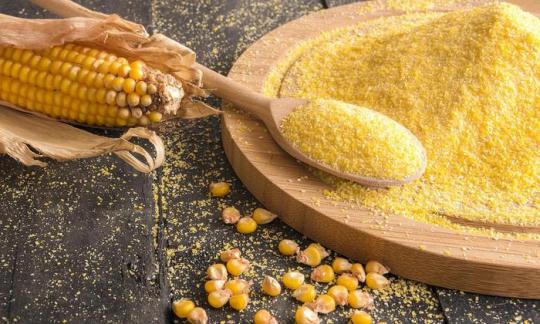

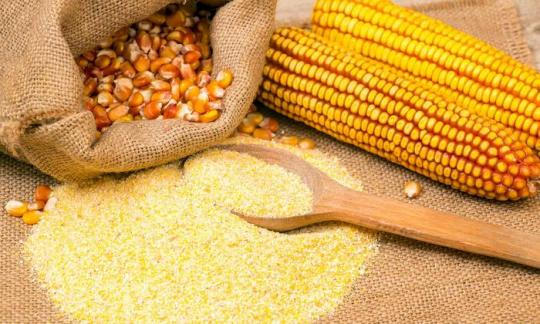

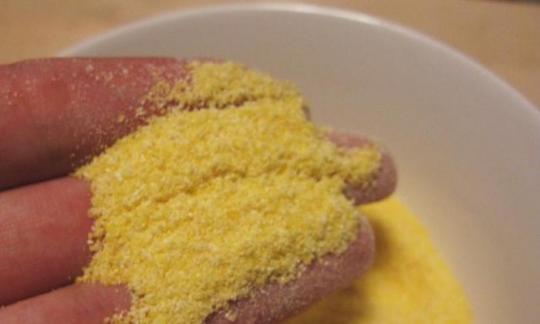

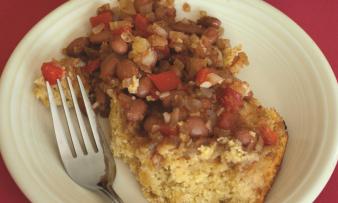
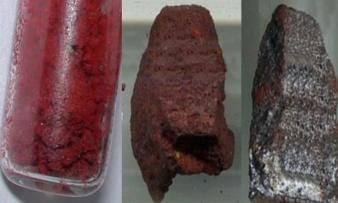
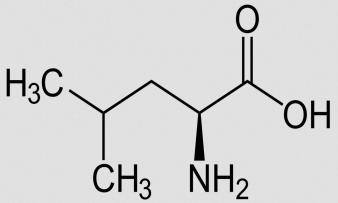



Comments